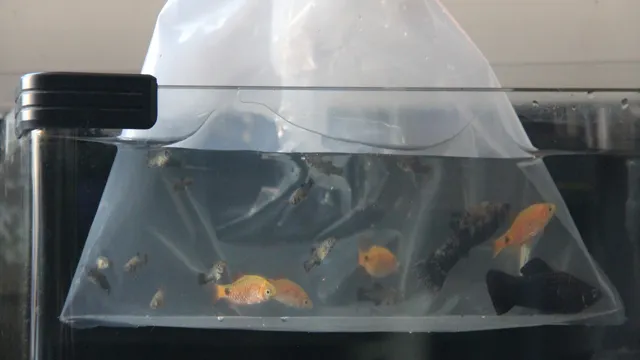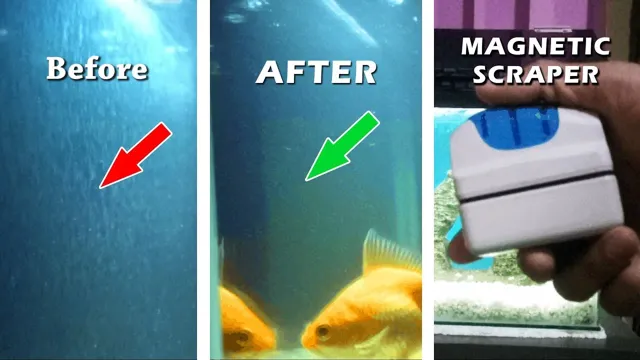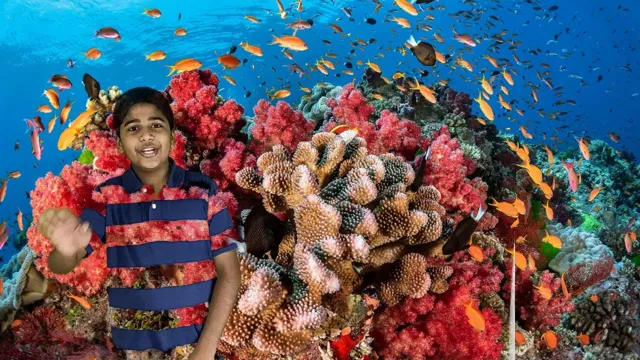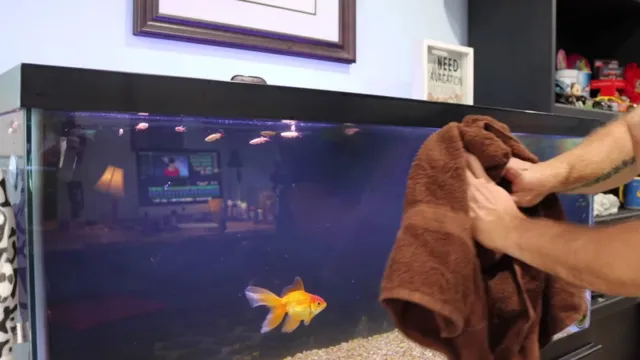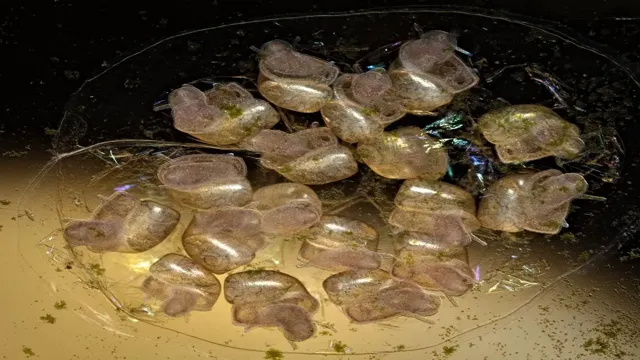If you’ve recently returned from a successful fishing trip and have managed to catch some wild sunfish, you might be wondering how to acclimate them to an aquarium environment. Sunfish are a popular choice for aquarium enthusiasts due to their vibrant colors and quirky personalities, but they require a certain level of care to ensure they thrive in captivity. In this blog post, we’ll explore the steps you need to take to help your wild sunfish adjust to their new home and provide them with the best possible care.
So, grab your fishing gear and let’s dive in!
Introduction
Acclimating wild sunfish to an aquarium can be a daunting process, but with patience and care, it can be done successfully. First and foremost, it is important to create an environment that mimics the fish’s natural habitat as much as possible. This includes ensuring the water temperature and pH levels are appropriate, providing ample hiding spots, and introducing plants and decorations that resemble their natural surroundings.
To acclimate the fish, start by floating the bag they came in in the aquarium, allowing the water temperatures to gradually equalize. Next, add a small amount of aquarium water to the bag every 15 minutes, eventually filling the bag to the point where the fish can swim out on their own. When releasing the fish, it’s important to do so gently and slowly to avoid causing them undue stress.
By following these steps and providing the necessary care, wild sunfish can thrive in their new home in your aquarium.
Understanding Wild Sunfish
Wild sunfish are a fascinating species that have captured the attention of many outdoor enthusiasts. These small, colorful fish are found in freshwater bodies across the United States and are known for their unique behaviors and impressive adaptability. Understanding wild sunfish can be a challenging task due to their complexity, but it is essential to learn as much as possible about these amazing creatures to appreciate their value and role in the ecosystem.
Wild sunfish are an excellent indicator of environmental health, and observing their behavior can provide valuable insights into the condition of aquatic habitats. So, why not dive in and learn more about these remarkable fish?
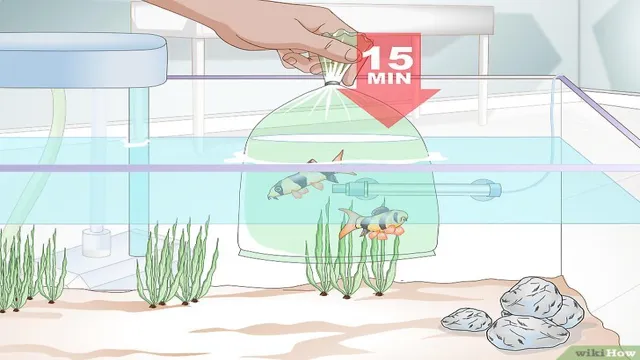
Preparing the Aquarium
Preparing the aquarium for your fish is an essential step in ensuring their health and happiness in their new environment. Just like humans, fish require a suitable living space to thrive, so it’s essential to take your time and prepare the aquarium properly. The first step is to choose the right size and type of tank for your fish species and the number of fish you plan to keep.
Once you have your aquarium, you’ll need to set it up and add the necessary equipment, such as a filter and heater, to maintain the proper water conditions for your fish. It’s also critical to add substrate, such as gravel or sand, and decorations to create a natural environment for your fish. By taking the time to prepare your aquarium correctly, you’ll be providing your fish a healthy home that they’ll love to live in.
Acclimating Wild Sunfish
Acclimating wild sunfish to an aquarium can be a tricky process, but well worth the effort when you see your little fishy friends thriving in their new environment. First things first, you want to make sure the water temperature is consistent between the aquarium and the wild environment where you caught your sunfish. It’s best to use a thermometer to make sure there’s no more than a two-degree difference.
Then, you need to acclimate your sunfish to the new water chemistry. This can be done by adding small amounts of aquarium water to the fish’s bag or container every 10-15 minutes for an hour. This will allow the sunfish to slowly get used to the differences in pH and mineral levels between their old and new homes.
Once this process is complete, you can release your sunfish into the aquarium with confidence! Keep in mind, however, that every fish is different and may take longer to adapt to the new environment, so be patient and monitor their behavior closely. Overall, the key to acclimating wild sunfish is to ensure a slow and steady transition that mimics their natural habitat as closely as possible. (See Also: How to Lower the pH in Your Freshwater Aquarium: Effective Methods and Tips.)
Step 1: Temperature Adjustment
When it comes to acclimating wild sunfish, temperature adjustment is the most crucial step to ensure their survival. Sunfish require a specific range of water temperature to thrive in their new environment. Before adding sunfish to your tank or pond, it is essential to match the water temperature in their current environment.
Gradual temperature adjustment is critical because sudden temperature changes can cause stress and harm to the fish. To prepare for optimal acclimation, fill a bucket or container with water from the sunfish’s existing location and place the fish in the container. Then, slowly increase the temperature of the water by a few degrees each hour until it matches the temperature of the water in your tank or pond.
Following this simple but vital step will increase your sunfish’s chances of successfully acclimating to their new environment and thriving.
Step 2: Water Quality and pH
When acclimating wild sunfish to a new aquarium, one important step to ensure their survival and health is to optimize the water quality and pH level. Wild sunfish are particularly sensitive to changes in their aquatic environment, and any sudden variations in the water chemistry can cause stress or even death. To acclimate these fish properly, it is crucial to test the pH and water quality of the aquarium, and adjust them to match the conditions of the water in which the sunfish were originally living.
The optimal pH range for sunfish is between 5 and 5, and the ideal water temperature is typically between 68 and 73 degrees Fahrenheit.
Before introducing the sunfish to a new aquarium, make sure to perform a thorough cleaning and maintain proper filtration to ensure a suitable habitat. By taking these steps, you can help your sunfish thrive in their new environment and prevent any potential health issues.
Step 3: Introducing the Sunfish to the Aquarium
When introducing a wild sunfish to your aquarium, it’s crucial to acclimate them properly to ensure their health and survival. Begin by floating the bag of fish in your aquarium for about 20 minutes to allow the water temperature to reach equilibrium. Then, open the bag and add small amounts of water from your aquarium into the bag every five minutes for the next thirty minutes.
This process, called drip acclimation, will help the sunfish adjust to the chemistry and temperature of your aquarium water slowly. Once the bag is filled with a 50/50 mix of water from both sources, use a net to transfer the fish into the aquarium, being careful not to introduce any water from the bag. It’s essential to take your time during this process as a sudden change in chemistry or temperature can be a shock to the sunfish and cause undue stress.
By following these steps, you can help your wild sunfish thrive in their new home, bringing beauty and interest to your aquarium for years to come.
Caring for Wild Sunfish
If you’ve recently caught a wild sunfish and want to keep it in an aquarium, it’s important to properly acclimate it to its new environment. The first step is to ensure that the water temperature in the aquarium matches that of the water source where the fish was caught. This is because drastic changes in temperature can cause stress and even death to the fish. (See Also: How to Clean Calcium Deposits from Aquarium: A Comprehensive Guide)
To do this, place the fish (still in its bag) in the aquarium for about 15 minutes, allowing the temperatures to equalize. After that, slowly add small amounts of the aquarium water to the bag every 10 – 15 minutes. This will help the fish get used to the different water chemistry and adjust to its new surroundings.
Keep monitoring the water temperature and adjust it accordingly until it remains stable. Once the fish appears comfortable, it’s time to gradually release it into the aquarium. Introducing a wild sunfish to an aquarium can be a delicate process, but patience and care will help ensure its successful transition to its new home.
Feeding the Sunfish
Sunfish Feeding the sunfish can be an enjoyable task for those who are interested in caring for wild sunfish. These beautiful creatures require a diet that consists of small insects, plankton, and aquatic plants. Providing these types of foods will help keep them healthy and promote their growth.
While starvation is not a common problem for sunfish, it is important to remember that overfeeding can be harmful to their health, leading to obesity and other health issues. It is recommended to feed sunfish small portions of food once or twice a day to ensure they get the nutrients they need while also preventing overfeeding. It is also important to introduce a variety of foods to their diet, as this will help keep them healthy and keep their diet well-rounded.
Taking good care of these wild sunfish can be a truly rewarding experience, and by providing them with the right diet and care, they will thrive in their natural environment.
Tank Maintenance
Tank maintenance is crucial if you are planning on keeping wild sunfish in your aquarium. Sunfish are easy to care for, but they need a clean environment to thrive. To keep the tank clean, you will need to change the water regularly.
It’s recommended that 10-20% of the water should be changed each week. Investing in a good filter will also help keep the tank clean. Sunfish are notorious for creating a lot of waste, and a good filter will help remove excess food, fish waste, and debris.
Also, make sure to clean the filter regularly and replace any worn-out parts. Tank decorations such as rocks, plants, and gravel can also collect waste and debris. Ensure you clean these items frequently.
Tank maintenance is essential to keep your sunfish healthy and happy. Neglecting your tank can lead to the buildup of harmful bacteria, disease, and stress that can cause illness or even death. Remember to keep your sunfish’s home clean, and they will reward you with their beautiful colors and entertaining personalities.
Conclusion
In conclusion, acclimating wild sun fish to an aquarium requires patience, a gentle touch, and a bit of understanding. Think of it like a first date – you want to make a good impression and show them that your aquarium is a comfortable and safe home. Treat them like royalty, give them time to adjust, and soon enough, they’ll be swimming happily in their new abode.
Just remember, if you make the transition too abrupt, you may end up with a fish that’s more finicky than fabulous. So take it slow, and enjoy watching your wild sun fish become part of your aquarium family!” (See Also: How to Make Driftwood for Aquariums: A Step-by-Step Guide)
FAQs
Can wild sun fish be acclimated to an aquarium?
Yes, wild sun fish can be acclimated to an aquarium with proper care and attention.
How long does it take to acclimate wild sun fish to an aquarium?
The acclimation process can take anywhere from a few hours to a few days, depending on the fish’s sensitivity and the aquarium environment.
What steps should be taken to acclimate wild sun fish to an aquarium?
It is essential to gradually adjust the water temperature, pH levels, and salinity levels to match those of the aquarium. Additionally, the fish should be given time to adjust to the aquarium’s lighting and general environment.
Should wild sun fish be quarantined before introducing them to an aquarium?
Yes, it is recommended to quarantine wild fish before introducing them to an established aquarium to ensure that they are free from any diseases or parasites.
What should be the ideal water conditions for wild sun fish in an aquarium?
Wild sun fish thrive in a freshwater environment with a neutral pH level, low to moderate water flow, and a temperature range of 75-85 degrees Fahrenheit.
What kind of food should be given to wild sun fish in an aquarium?
Wild sun fish eat a variety of foods, including small insects, crustaceans, and small fish. In an aquarium, they can be fed with a high-quality pellet and live or frozen foods.
Are there any particular behaviors that need to be observed in wild sun fish in an aquarium?
Observing the fish’s behavior is essential to ensuring their health and well-being in an aquarium. Signs of stress or illness, such as loss of appetite, erratic swimming, or abnormal breathing, should be addressed immediately.

